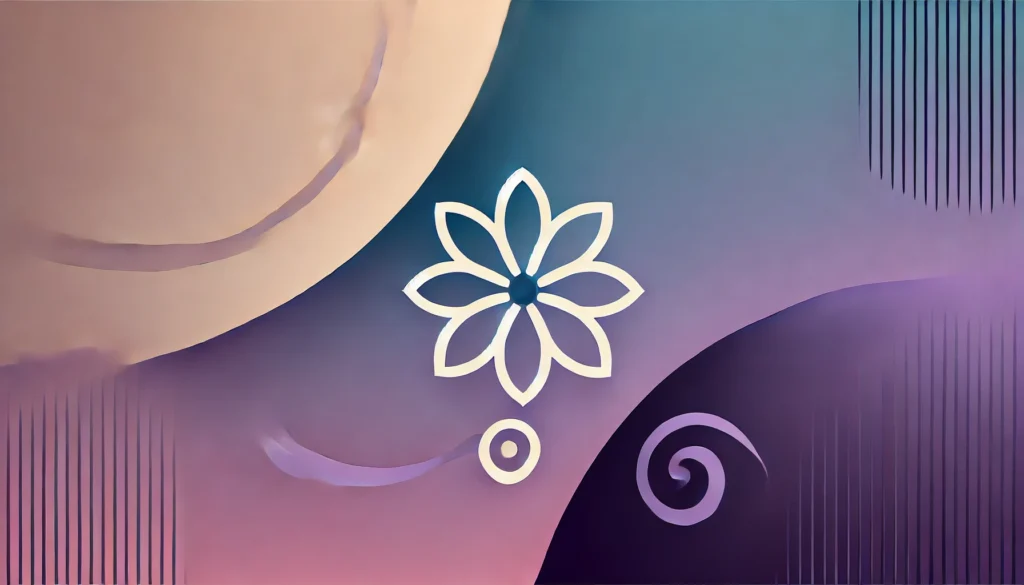Nature and fantasy often intertwine in storytelling, adding depth to the narrative. Two iconic examples of this blend in popular culture are The Chronicles of Narnia and JoJo’s Bizarre Adventure (JJBA). Both rely on the imagery of flowers to reflect themes of growth, purity, and transformation. What Are the Flowers Narnia Is Covered In JJBA becomes a central question when exploring how Narnia, the magical land created by C.S. Lewis, uses its flora to evoke themes of divine beauty and rebirth. Meanwhile, Hirohiko Araki’s JJBA uses floral imagery intricately, with flowers serving symbolic and aesthetic purposes throughout the series.
This article explores the connection between Narnia and JJBA through the floral lens, answering the key question: what are the flowers Narnia is covered in JJBA? By delving into the role of flowers in both universes, we’ll uncover how this shared imagery shapes each world’s narrative and visual appeal.
What Is JJBA and Why Its Imagery Matters
JoJo’s Bizarre Adventure (JJBA), a manga and anime series by Hirohiko Araki, has become famous for its vibrant characters, supernatural powers (Stands), and detailed visual style. The series is known for its unique blend of action, art, and symbolism, and its frequent use of flowers plays a key part in this narrative. Flowers appear not just as background elements but as central symbols that carry emotional weight, represent life and death, and mark crucial turning points.
In JJBA, Araki’s symbolic use of floral imagery is vital. Flowers represent a balance between life’s beauty and its fragility. They often appear in moments of personal growth or during pivotal events, helping to underscore characters’ emotional journeys. Araki’s attention to nature not only enhances JJBA’s visual appeal but also deepens the audience’s understanding of the story’s key themes.
Understanding Narnia: A World Filled with Symbolic Flora
In C.S. Lewis’ The Chronicles of Narnia, nature plays a profound role. The landscape of Narnia, brimming with greenery and blooming flowers, represents more than just beauty. The flora reflects deeper themes of purity, divine power, and spiritual growth. Flowers, especially, symbolize rebirth, life, and the triumph of good over evil.
The imagery of spring arriving in Narnia, for instance, is marked by blossoming flowers as the world awakens from the grip of eternal winter under the White Witch’s reign. These flowers, particularly roses and lilies, carry spiritual connotations. Roses symbolize love and faith, while lilies, often linked to Aslan, reflect purity and resurrection. These floral motifs contribute to the ethereal quality of Narnia, making it a land full of symbolic meaning and moral lessons.
The Connection Between Narnia and JJBA: Floral Imagery
While Narnia and JJBA belong to different genres, their use of floral imagery serves similar functions. Both stories use flowers to represent transformation, beauty, and the mystical elements of their worlds. Floral symbolism allows both universes to explore the duality of life—its beauty alongside its fragility.
In Narnia, flowers emerge during moments of divine intervention and major events, such as Aslan’s return and the rebirth of the land. Similarly, flowers in JJBA highlight characters’ emotional and personal transformations, marking key points in their journeys. The shared use of floral motifs across these two works adds layers to the storytelling, drawing parallels between nature’s power and the magical forces that shape these worlds.
What Are the Flowers Narnia Is Covered In? A Detailed Look
Narnia’s landscapes feature abundant flowers that hold symbolic meaning. Prominent among them are roses and lilies, both of which appear frequently throughout the series. These flowers don’t merely adorn Narnia’s scenery; they symbolize key themes of the story.
For example, the rose symbolizes love, hope, and faith, appearing during times of moral triumph and spiritual growth. Lilies, closely tied to Aslan, represent purity, sacrifice, and renewal. They bloom during key moments of rebirth, such as when Aslan sacrifices himself for Edmund and returns to life. These floral images help to shape the magical atmosphere of Narnia, answering the question, What Are the Flowers Narnia Is Covered In JJBA, and reminding readers of the divine and moral lessons embedded within the story.
Exploring JJBA’s Iconic Use of Flowers
In JoJo’s Bizarre Adventure, flowers appear in important moments, playing symbolic roles in battles, character development, and emotional resolution. Floral imagery emphasizes the beauty and fragility of life, often appearing in pivotal scenes. These flowers mark the growth of characters or signal the awakening of new abilities.
For example, in JJBA, certain flowers, such as roses or cherry blossoms, symbolize different stages in a character’s journey. Cherry blossoms often represent the transient nature of life, blooming only briefly and reminding viewers of the impermanence of life. The recurrence of flowers across various story arcs adds meaning and serves as a visual metaphor for personal transformation.
Crossover Potential: Narnia-like Landscapes in JJBA
Several moments in JJBA evoke landscapes reminiscent of Narnia, where flowers flourish amidst battles and personal transformation. The beauty of cherry blossoms or other floral elements in JJBA creates a Narnia-like atmosphere, adding a mystical quality to otherwise intense scenes.
These floral backdrops act as a stark contrast to the series’ chaotic and supernatural battles. When flowers bloom in the background, they create a sense of calm amid the storm, echoing Narnia’s symbolic use of flowers to mark renewal and change. Cherry blossoms, in particular, resemble Narnia’s flowers, signaling hope and transformation after moments of darkness.
The Role of Flowers in JJBA’s Arcs: A Breakdown
Each arc of JoJo’s Bizarre Adventure uses flowers to emphasize key narrative themes and character development.
Flowers in the Phantom Blood Arc
In the Phantom Blood arc, flowers serve as a visual reminder of life’s fleeting nature. Characters encounter blooming flowers at moments when life and death are at stake, marking the thin line between the two.
Flowers in the Stardust Crusaders Arc
The Stardust Crusaders arc uses flowers to symbolize the growth and unity of the characters as they embark on their perilous journey. The recurring appearance of flowers throughout the arc signals key developments in the characters’ emotional and personal arcs.
Flowers in Diamond Is Unbreakable and Beyond
Later arcs, like Diamond Is Unbreakable, showcase the use of floral imagery to highlight moments of self-discovery. Flowers accompany characters during times of inner growth and awakening, symbolizing their evolving powers and emotional maturity.
Why Are Flowers So Important in Fantasy?
Flowers have long symbolized life, beauty, and transformation in fantasy narratives. In both Narnia and JJBA, they play a central role in conveying these themes. Flowers signify not only life’s beauty but also its vulnerability, prompting the question, What Are the Flowers Narnia Is Covered In JJBA. They bloom in moments of victory and rebirth, while their fragility underscores the ever-present threat of death.
In both works, flowers serve as reminders of life’s duality: its beauty coexists with its fleeting nature. While Narnia’s flowers signal divine renewal and moral triumph, JJBA’s flowers represent emotional growth and personal strength.
Narnia and JJBA: Comparing the Symbolism of Flowers
Narnia and JJBA use flowers to explore themes of purity, transformation, and renewal. However, the symbolism varies slightly between the two. In Narnia, flowers often represent divine purity and the power of good over evil. Meanwhile, in JJBA, flowers symbolize personal growth, fragility, and the emotional journey of characters.
Despite these differences, both works use floral imagery to deepen their narratives, offering a visual representation of transformation and change. Whether symbolizing spiritual renewal in Narnia or personal strength in JJBA, flowers serve as a powerful storytelling device in both universes.
Floral Powers in JJBA: Characters and Stands
Several characters in JoJo’s Bizarre Adventure have close associations with floral imagery. Joseph Joestar’s Stand, Hermit Purple, manifests as vines and flowers, symbolizing his connection to nature and life. These visual motifs emphasize the power and beauty of nature.
Other characters also possess Stands connected to flowers, reflecting their personalities and abilities. The use of floral imagery highlights the duality of strength and fragility, which often characterizes these characters.
How Flowers Define the Characters’ Journeys in JJBA
Flowers in JJBA play a critical role in shaping the characters’ journeys. The presence of flowers often signals turning points in their emotional or physical development. As characters grow stronger or face internal conflicts, flowers bloom in the background, visually representing their personal transformation.
In Diamond Is Unbreakable, for instance, Josuke’s journey is often accompanied by the appearance of flowers. These flowers symbolize his emotional growth, representing the blossoming of his inner strength and maturity.
Symbolism of Specific Flowers in JJBA
Certain flowers in JJBA carry specific meanings. Roses, for instance, symbolize love, beauty, and pain, reflecting the complex emotions characters often experience. The thorny nature of roses reminds viewers that beauty often comes with risk and danger.
Cherry blossoms, another frequently appearing motif, represent the fleeting nature of life. Their short-lived beauty adds emotional weight to pivotal scenes, serving as a reminder of the impermanence of life and the inevitability of death.
Imagining Narnia’s Flowers in the World of JJBA
If Narnia’s flowers existed in JJBA, they would likely enhance the visual and thematic depth of the series. The roses and lilies, symbols of love and purity in Narnia, could visually represent characters’ emotional journeys in JJBA, adding further layers of meaning to their battles and personal growth.
For example, roses could bloom during moments of personal sacrifice or acts of love, mirroring their symbolic role in Narnia. This raises the question, What Are the Flowers Narnia Is Covered In JJBA? These flowers would not only heighten the aesthetic appeal of JJBA but also deepen its thematic exploration of life, growth, and transformation.
The Artistic Beauty of Flowers in JJBA: Visual Analysis
Hirohiko Araki’s attention to detail in depicting flowers is a testament to his artistic talent. The flowers in JJBA are drawn with intricate lines and vibrant colors, creating a sense of movement and life. Araki’s artistic choices highlight the contrast between the delicate beauty of flowers and the intense, often violent, world of JJBA.
The juxtaposition of floral beauty against the chaos of battle adds emotional depth to the scenes, emphasizing the fragility of life. Araki’s masterful depiction of flowers makes them a central visual and symbolic element in the series, enhancing both the story and the art.
Flowers as a Reflection of Good vs. Evil in Both Universes
Flowers in both Narnia and JJBA often reflect the ongoing battle between good and evil. In Narnia, the arrival of spring and blooming flowers signal the defeat of the White Witch and the triumph of good. Similarly, in JJBA, flowers often appear during moments of emotional victory or personal growth, symbolizing the characters’ strength in overcoming evil.
This shared use of floral imagery highlights the themes of renewal and transformation present in both works. Flowers serve as visual markers of change, representing the characters’ triumphs and the forces of good in both universes.
Fan Interpretations of Floral Imagery in JJBA
Fans of JJBA have long admired the series’ use of floral imagery, interpreting it as a reflection of the characters’ inner journeys. Flowers often symbolize personal growth, emotional resilience, and the fleeting nature of life. Fan theories abound about the deeper meanings behind specific flowers, with some seeing them as metaphors for the characters’ transformations.
In fan art and discussions, floral motifs remain a popular element, with fans using flowers to visually represent their favorite characters. This connection between flowers and character development adds to the depth of the series, making JJBA a rich source of inspiration for artists and fans alike.
Flowers as a Visual Language in Both Narnia and JJBA
In both Narnia and JJBA, flowers serve as a visual language that conveys key narrative themes. Whether representing purity and divine power in Narnia or emotional growth and transformation in JJBA, flowers add layers of meaning to the story.
Their presence in both works enhances the visual storytelling, creating a rich symbolic world that resonates with readers and viewers. Flowers in Narnia and JJBA are more than just decorative elements; they are integral to the narrative, shaping the themes of growth, renewal, and the battle between good and evil.
Conclusion: The Mystical and Symbolic Power of Flowers in Fantasy
Flowers, with their inherent beauty and fragility, have long played a central role in fantasy storytelling. Both The Chronicles of Narnia and JoJo’s Bizarre Adventure use flowers to symbolize growth, transformation, and the triumph of good over evil. This prompts the question, What Are the Flowers Narnia Is Covered In JJBA? In Narnia, flowers reflect divine purity and renewal, while in JJBA, they symbolize personal growth and emotional resilience.
The ongoing fascination with floral imagery in both Western and Japanese storytelling speaks to the enduring power of nature as a symbol of life and transformation. Flowers continue to captivate audiences, enhancing the visual and emotional depth of both Narnia and JJBA.


